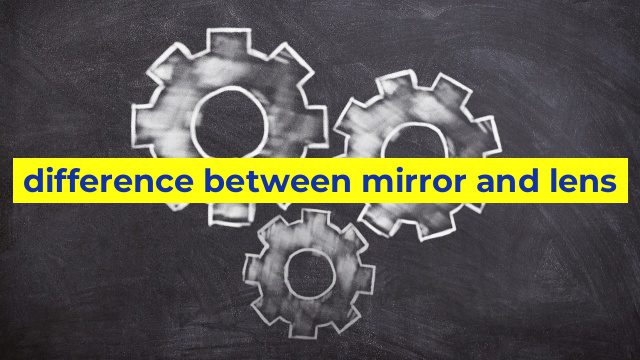The Fundamental Difference Between Mirrors and Lenses
When it comes to optical science, two of the most basic components are mirrors and lenses. These tools allow scientists and enthusiasts alike to manipulate light in unique and incredible ways. But what are the differences between these two components, and how do they impact the way we use them?
The Basics of Mirrors
Mirrors are a flat, reflective surface that can bounce light in specific directions. The most common type is a plane mirror, which reflects light as a perfect reflection. Other types of mirrors, such as concave or convex mirrors, distort the reflection in various ways, making them useful for specific applications.
One of the unique properties of mirrors is that they can flip images horizontally. This is why you look reversed in a mirror compared to how you appear in a photograph. Mirrors can also reflect light across large distances, making them useful for telescopes and other optical instruments.
The Basics of Lenses
Lenses, on the other hand, are curved pieces of glass that refract, or bend, light in specific directions. There are two types of lenses: convex and concave. Convex lenses are thicker in the center than at the edges and magnify images. The most common use for convex lenses is for glasses, telescopes, and magnifying lenses used in laboratories.
Conversely, concave lenses are thinner in the center and thicker at the edges. They can make objects appear smaller and are often used in cameras and telescopes. Lenses can also correct vision problems, such as nearsightedness or farsightedness.
The Main Difference
The main difference between mirrors and lenses is that mirrors reflect light and lenses refract light. And while both mirrors and lenses can reflect or refract light, they do so in different ways that make them useful for different applications.
Mirrors are great for reflecting light long distances or for flipping images, while lenses are more suited to magnifying and correcting vision. Both play key roles in optical science and are crucial components in many devices, from telescopes and microscopes to cameras and eyeglasses.
In summary, while both mirrors and lenses manipulate light, the way they do so is unique to each component. Understanding the fundamental differences between these two optical components can help you better appreciate their uses and applications.
Table difference between mirror and lens
| Aspect | Mirror | Lens |
|---|---|---|
| Surface | Reflective | Transparent |
| Shape | Flat or curved surface | Convex or concave surface |
| Function | Reflects light, forming a virtual image | Bends light, forming a real or virtual image |
| Uses | Reflective surfaces, decorative purposes, rearview mirrors | Correcting vision problems, magnifying objects, focus light in cameras and projectors |
| Types | Flat mirror, convex mirror, concave mirror | Convex lens, concave lens, converging lens, diverging lens |


